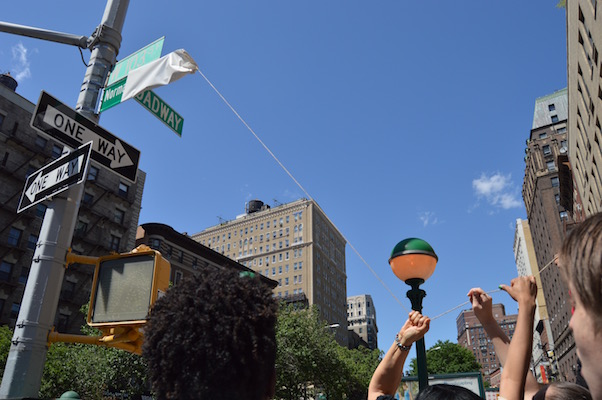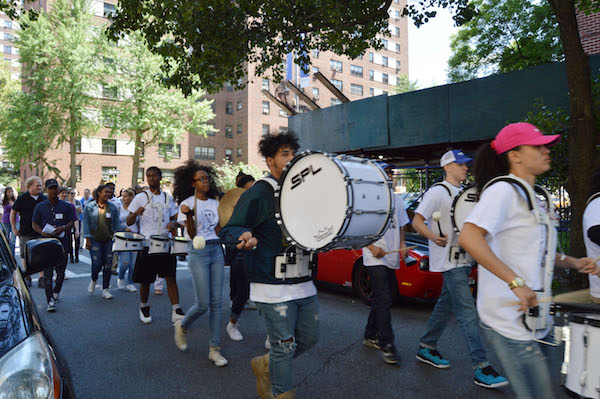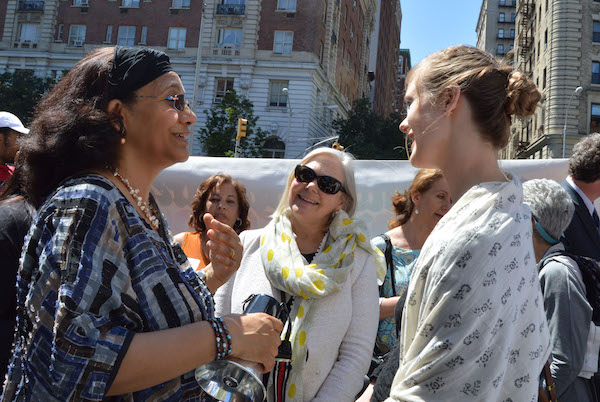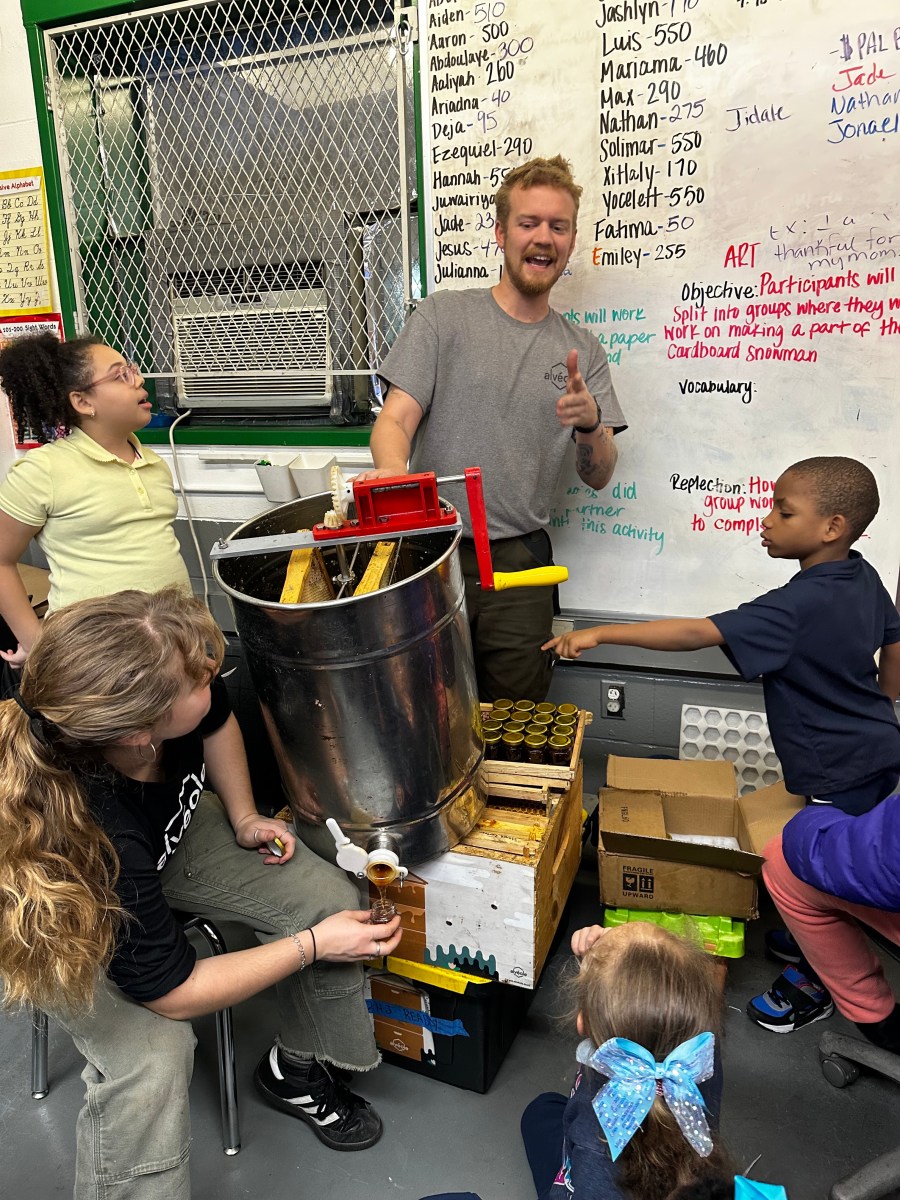
BY JACKSON CHEN | After the final bell rang at Edward A. Reynolds West Side High School, the afterschool crowd marched down West 103rd Street. Energized by the summer warmth, they yelled “Norman!” “Rockwell!” as if trying to beckon the American artist, as a long-ago youngster, to come outside and join in the afternoon antics.
The parade, with the fanfare of the school’s marching band at the lead, traveled west past the childhood home of Rockwell at 206 West 103rd toward their destination at the corner of Broadway. There, at the northeast corner of the intersection with West 103rd, they would unveil the freshly minted street sign for Norman Rockwell Place.
The unveiling was the final step in a story of persistence by the students and their English teach at West Side High, Rene Mills, who developed a connection to the influential painter and illustrator after a visit they took to the Norman Rockwell Museum in Stockbridge, Massachusetts.
“So much work and love was put into this and then seeing it all come to fruition,” Mills said. “It has just been a dream come true.”
The students’ obsession with Rockwell, who was born in 1894 and lived in Manhattan more than a century ago, energized City Councilmember Mark Levine, who only became aware of the artist’s connection to his district after being informed by the eager high schoolers.
“Renaming a street in New York City is no joke,” Levine said. “They had to tangle with over a year of bureaucracy… It was not an easy process.”

Wanting to see some commemoration of Rockwell –– best known for a half century of Saturday Evening Post covers –– in their neighborhood, the students enlisted 300 signatures on a petition they presented to Community Board 7, which unanimously accepted their proposal. With Levine’s help, the proposal passed the City Council and eventually was signed into reality by Mayor Bill de Blasio on February 25.
“I want students to know that the leadership they displayed in making this possible,” Levine said. “The same abilities are going to serve you well… You are going to be leaders in every arena that you step into.”
As the cloth concealing the street sign was slipped off with the students, Mills, and Levine all yanking on the ropes, the crowd of students, teachers, museum staffers down from Stockbridge, and even relatives of Rockwell cheered at the legacy left standing tall on West 103rd Street.
“It’s really moving there’s this connection with the students here,” said Alethea Rockwell, the artist’s great granddaughter. “It shows how public institutions like museums can do a lot for communities and schools and how art and the history of art are still really relevant to our lives.”

Alethea was joined by more members of Rockwell’s lineage in the form of his great niece Jane Rockwell Jaffe and his great great nephew Jason Claiborne.
“When he was alive, he didn’t get the respect he deserved as a fine artist because he was commercialized and actually made a living from his art while he was alive,” Jaffe said. “That was considered a sin in those days.”
But now, his paintings have become an interesting lens into American culture and history, and for the students of West Side High, served as catalysts for understanding the diverse melting pot New York was in the early 20th century. According to Levine, Rockwell’s paintings are more than just depictions of American life in the past, but poignant commentary on the social change transforming an industrializing nation.
“I am convinced that [his] worldview was formed right here on 103rd Street at a time when this city was filled with people from all incomes, races, and backgrounds,” Levine said. “And we know that young Norman soaked that in and it informed his art for the rest of his career.”
Now underneath the heavily faded West 103rd Street sign, the new marker serves to honor the artist’s impact, but also as a reminder to the students of their efforts to memorialize Rockwell by altering the city’s streets.
“When you think about this sign, when you drive past it, when you walk down the street,” said Tom Daly, the Rockwell museum’s director of education, “do realize that these kids have the level of dedication that most people wouldn’t even imagine during their lifetime.”


































